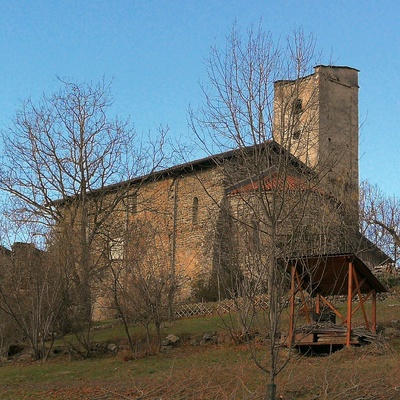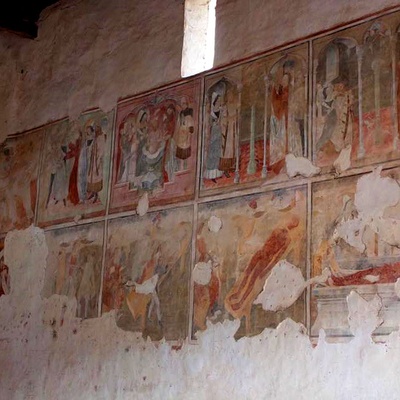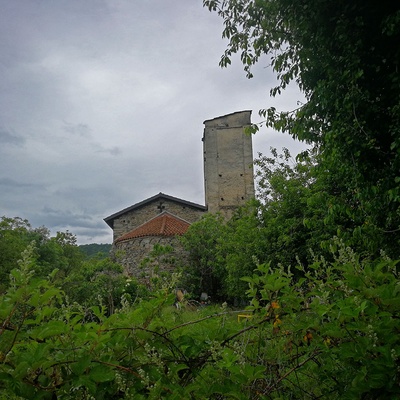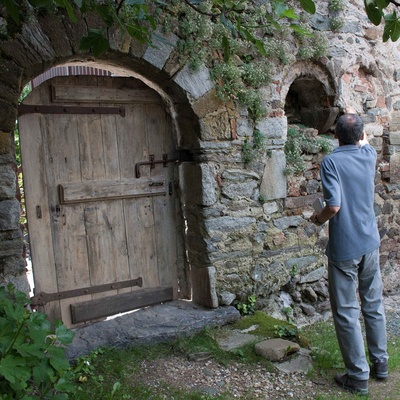




Via San Bartolomeo, 10051 Avigliana
Built on the crest of a glacial cirque dating back to the Upper Pleistocene (126,000 - 12,000 years ago) and situated between the small lake and the Mareschi area of Trana, the origin of the church dedicated to Saint Bartholomew is traced back to around the 12th century.
Tradition has it that, like other nearby localities, this place was plundered by the Saracens and later by Frederick Barbarossa during their transits in the Susa Valley.
The building, in Romanesque style, with a regular plan consisting of a single nave, the bell tower, some adjacent rooms, and its possessions were part of a Priory initially subject to the Abbey of San Michele della Chiusa (the current Sacra of San Michele) and governed by Benedictine monks.
Despite the numerous and sometimes radical interventions carried out over the centuries, the complex is still recognizable in the cloister defined by the church and the two residential wings. The facade that provided access to the chapter house and the refectory has also been preserved. The wall that enclosed the entrance to the complex was demolished in the 20th century and replaced by a gate that allows access to the courtyard. The church viewed from the outside is a magnificent example of Romanesque style: the facade, walls, and apse are embellished by stone lesenes and hanging arches that also adorn the ancient bell tower with its truncated top.
Access to the place of worship once occurred through an entrance now walled up, located on a side wall. Inside, a cycle of frescoes dating back to the second half of the 15th century can be seen, representing scenes from the life and martyrdom of the Saint. Some details of the frescoes show the influence of the transalpine style on the anonymous painter. In the modern age, the Priory of Saint Bartholomew, which became part of the patrimony of the Abbazial Seminary of Giaveno, was governed by the canons of the Collegiate Church of Saint Lawrence of the same place, who succeeded the Benedictines in the Abbey of San Michele.
The buildings that in the Middle Ages housed the monks' residences increasingly came to be used for agricultural purposes from the late 16th century onwards. The church, having become municipal property, was the subject of a splendid thesis by Arch. Alice Orlando, specialized in Restoration and Valorization of Architectural Heritage, and of an architectural and fresco restoration project curated by Arch. Mauro Bellora of MGA4STUDIO, completed in September 2015.
Texts by Marco Battistoni and Davide Gazzola of the A3 association.



















